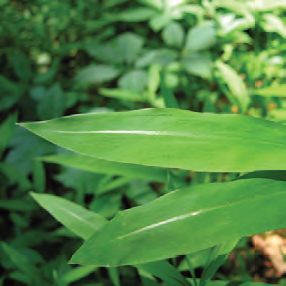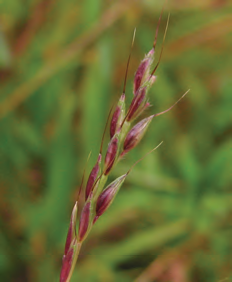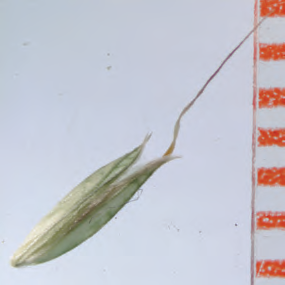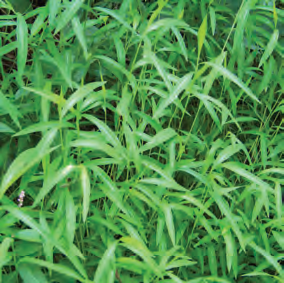Japanese Stilt-Grass
Microstegium vimineum
Grass Family (Poaceae)
Annual Grass
Flowers: Sep–Nov
Native Range:Tropical Asia
Introduction: 1919 in Tennessee as a packing material for porcelain.
Mid-Atlantic Range & Habitats: Widespread throughout the region in moist forests, riparian areas and roadsides.


Especially invasive in shaded forests without a dense midstory, this grass forms dense, monotypic stands that exclude most other vegetation. The structural alteration of forest floor vegetation in Microstegium invasions may be detrimental to ground-nesting birds, and synergistic effects with deer browsingmay act to prevent shrub establishment, thus maintaining degraded forest under stories.

Quick ID
- Leaf: Leaf with pale shiny midrib on upper surface
- Stem: Nodes of stems without hairy ring
- Fruit: Fruit with awn
More ID Tips
Japanese Stiltgrass and Whitegrass are both small (up to 15 dm tall), weak stemmed grasses that sprawl along the ground, with the growing tips ascending. Whitegrass occasionally roots at the nodes. The leaves of Whitegrass are about 3–8 mm wide by 5–10 cm long with scabrous edges that give them a slightly rough feel. The leaves of stiltgrass are 5–20 mm wide by 3–8 cm long without scabrous edges. Whitegrass and Japanese Stiltgrass may be found growing together, and care must be taken to confirm the identification. The invasive generally blooms later in the fall than the native, but there is a significant period of overlap in early autumn. By mid-autumn, the stems of Whitegrass are often green or tan and are already bare of fruits, while the stems of Japanese Stiltgrass are turning bright red and the plant often has most of its fruits intact.


